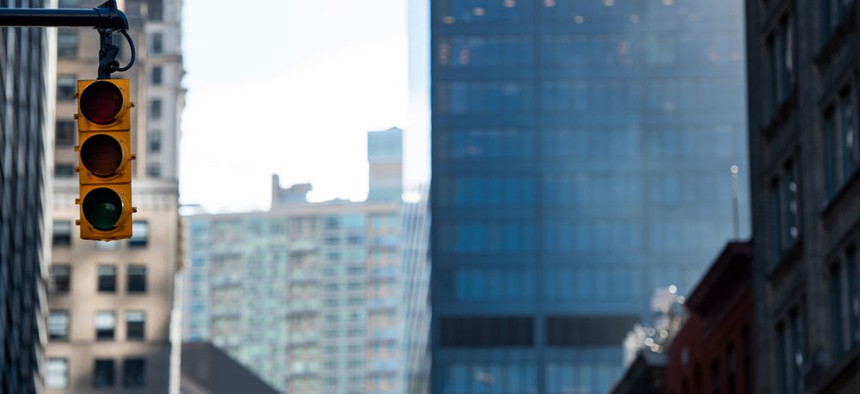New York City
DOT takes on city’s wireless shutdown
A Y2K-like bug that caused the New York City Wireless Network to shut down over the weekend has prompted an onslaught of criticism against the city and its Department of Information Technology.

A Y2K-like bug affected the Department of Transportation's remote control of 12,000 traffic lights in New York City. Shutterstock
A Y2K-like bug that caused the New York City Wireless Network (NYCWiN) to shut down over the weekend has prompted an onslaught of criticism against the city and its Department of Information Technology and Telecommunications (DOiTT) for their lack of transparency about the issue.
The bug has affected the functioning of some of the city’s police license plate readers and interrupted some of the city’s collection and transmission of information. Also affected were the Department of Transportation’s 12,000-plus traffic-signal controllers. The traffic signals themselves are still operating as usual, but if they stay disconnected for too long, the timing of individual signals could drift and become out of sync with one another, a city official told The New York Times. The DOT, however, is not too worried about that.
“It's theoretical, it could happen,” Cordell Schachter, chief technology officer at the New York City Department of Transportation, told City & State on Thursday. “There’s backup to the system besides the network clock information. If it went away for a long time, could it be an issue? And could we actually have to go and reset a clock? Yes. But in the short run, we haven’t seen any impact yet.”
Schachter predicted that systems would be up and running “very shortly,” but in the meantime, he said, the department is working to mitigate any possible impact.
“Almost all of our stuff – it’s out in the open,” Schachter said. “We have inspectors riding around, verifying that the signals continue to function as they’re supposed to. It’s a very resilient part of the city’s infrastructure, and it’s designed to take a lickin’ and keep on tickin’.”
For the rest of today's tech news, head over to First Read Tech.

